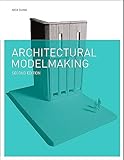Architectural modelmaking / by Nick Dunn
By: Dunn, Nick [author]
Publisher: London : Laurence King Publishing, c2014Edition: Second EditionDescription: 216 pages : illustrations (black and white, and colour) ; 28 cmContent type: text Media type: unmediated Carrier type: volumeISBN: 9781780671727Subject(s): Models and model making | Architectural modelsDDC classification: 720.228 Summary: The physical model is an important communication tool for architects. Although the proliferation of CAD programmes has enabled the creation of increasingly complex computer models and virtual environments, there is also a growing need to address the three-dimensional qualities of architecture that may be lost when using such media. This book focuses on the inspiring possibilities for modelling the built environment with all the different media and techniques available. In describing the use of different models in different contexts, the book provides a practical guide to how and why models are used, and what they are used for. This second edition includes more detailed step-by-step exercises, expanded discussion of materials and techniques, updated coverage of digital techniques and new case studies.| Item type | Current location | Home library | Call number | Status | Date due | Barcode | Item holds |
|---|---|---|---|---|---|---|---|
 BOOK
BOOK
|
COLLEGE LIBRARY | COLLEGE LIBRARY SUBJECT REFERENCE | 720.228 D922 2014 (Browse shelf) | Available | CITU-CL-46492 |
Includes index.
The physical model is an important communication tool for architects. Although the proliferation of CAD programmes has enabled the creation of increasingly complex computer models and virtual environments, there is also a growing need to address the three-dimensional qualities of architecture that may be lost when using such media. This book focuses on the inspiring possibilities for modelling the built environment with all the different media and techniques available. In describing the use of different models in different contexts, the book provides a practical guide to how and why models are used, and what they are used for. This second edition includes more detailed step-by-step exercises, expanded discussion of materials and techniques, updated coverage of digital techniques and new case studies.
700-799 720

There are no comments for this item.